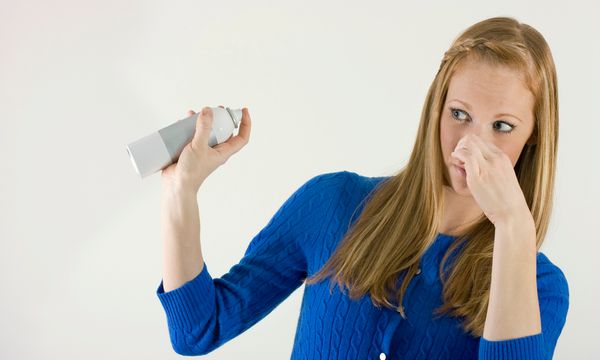While some of today's high-end enamel cookware shouldn't be cleaned with abrasives, it is fine to apply a baking soda paste to tough areas, then scrub to clear. A casserole dish with stubborn, baked-on food can be cleansed by adding boiling water and about 3 tablespoons salt. Let it stand until the water cools, then clean as usual.
Roasting pans and broiler pans can be among the most difficult to get clean. Often they won't fit into the dishwasher; even when they do, the machine still doesn't do a good job getting them clean. A way to avoid multiple cleanings and save time is to fill or cover the pan with very hot water and just let it sit. If more drastic measures need to be taken, fill the pan with water and boil it on your stovetop for a few minutes. Then wipe clean or scrub with some salt sprinkled onto a sponge. For the toughest spots, sprinkle salt directly onto the problem areas and scrub.
One of the best ways to clean a really messy broiler pan is to set it on the stove while the pan is still hot and fill the lower drip pan with very hot water. Then place the slotted upper pan on top and cover that with paper towels. The hot water underneath produces a steam that helps loosen the grime. The paper towels do their part by absorbing the grime or keeping it damp. After a half hour or so, the remains will be easy to wipe away, or at least a little easier to scrub off with a scouring pad. Finally, sprinkle the entire surface with baking soda and give it a good once-over.
Speaking of grease, you can clean a gritty frying pan by simmering it on the stovetop with 1/4 inch water and 1/2 cup vinegar for about ten minutes. Afterward, wash as usual.
Clay pots used in cooking also become stained or take on odors. To solve this problem, fill such a pot with water and add 1 to 4 tablespoons baking soda. Let the mixture stand for a half hour or more, then rinse and dry thoroughly. Sometimes a clay cooker can start to grow spots of mold. Brush the mold with a paste made of baking soda and water and let it stand. If you can, give it an extra boost by putting the cooker into direct sunlight. After half an hour, brush the paste away and rinse the pot.
If your copper-bottom pans and kettles need sprucing up, don't turn to toxic polishes. Polishes are high on the list of products to avoid; instead, toss the toxins and take up your salt and lemon juice. Copper-bottom pans and kettles can be made shiny again with a paste made of salt and lemon juice. Rub the paste in with a cloth, then wipe and rinse thoroughly.
You can also clean copper-bottom pans with a similar paste treatment substituting vinegar for the lemon juice. Or, if you like, try filling a spray bottle with undiluted vinegar and spraying it directly onto the bottoms of the pans. Let it sit for a bit, and you should see the tarnish begin to evaporate. Then sprinkle with salt, scrub, and rinse. For really tough stains, coarse salt (such as sea salt or kosher salt) works better than table salt. Another method is to simply cut a lemon in half, dip it in (or sprinkle onto it) some salt to cover the meat of the fruit, and rub in circular motions onto the copper. Afterward, rinse and dry thoroughly.


